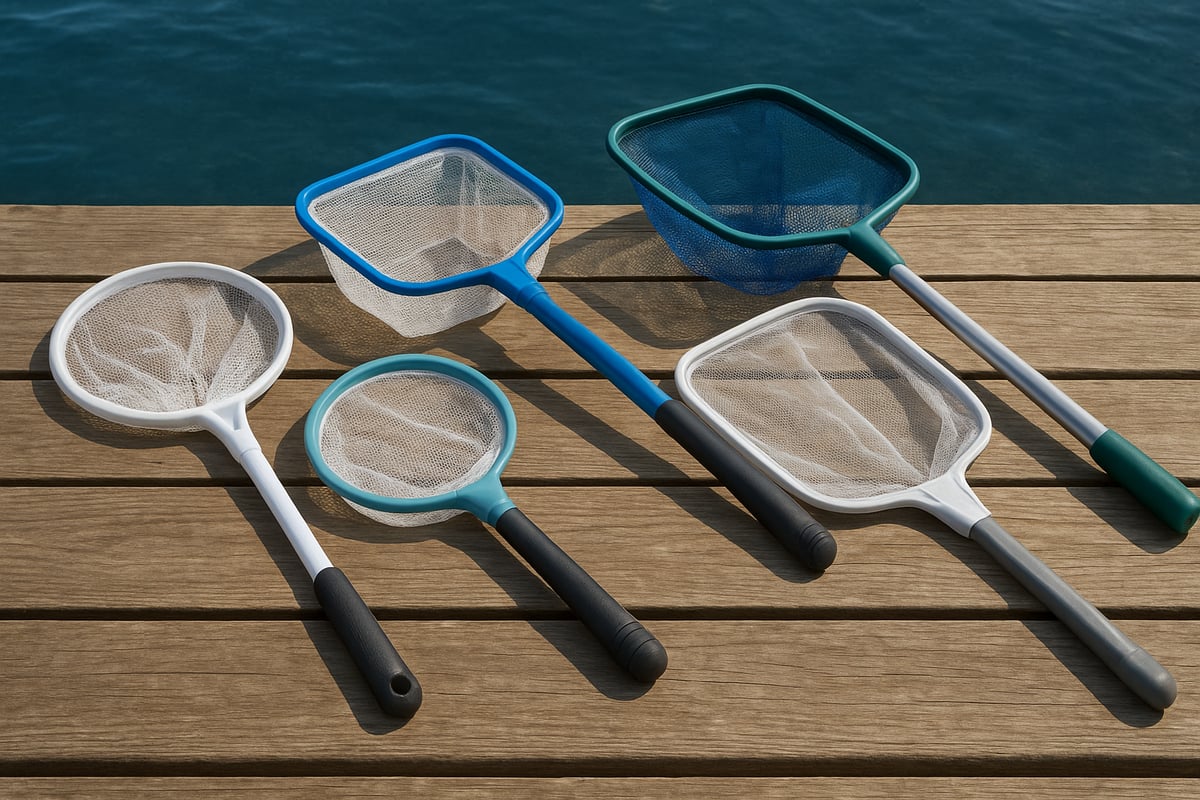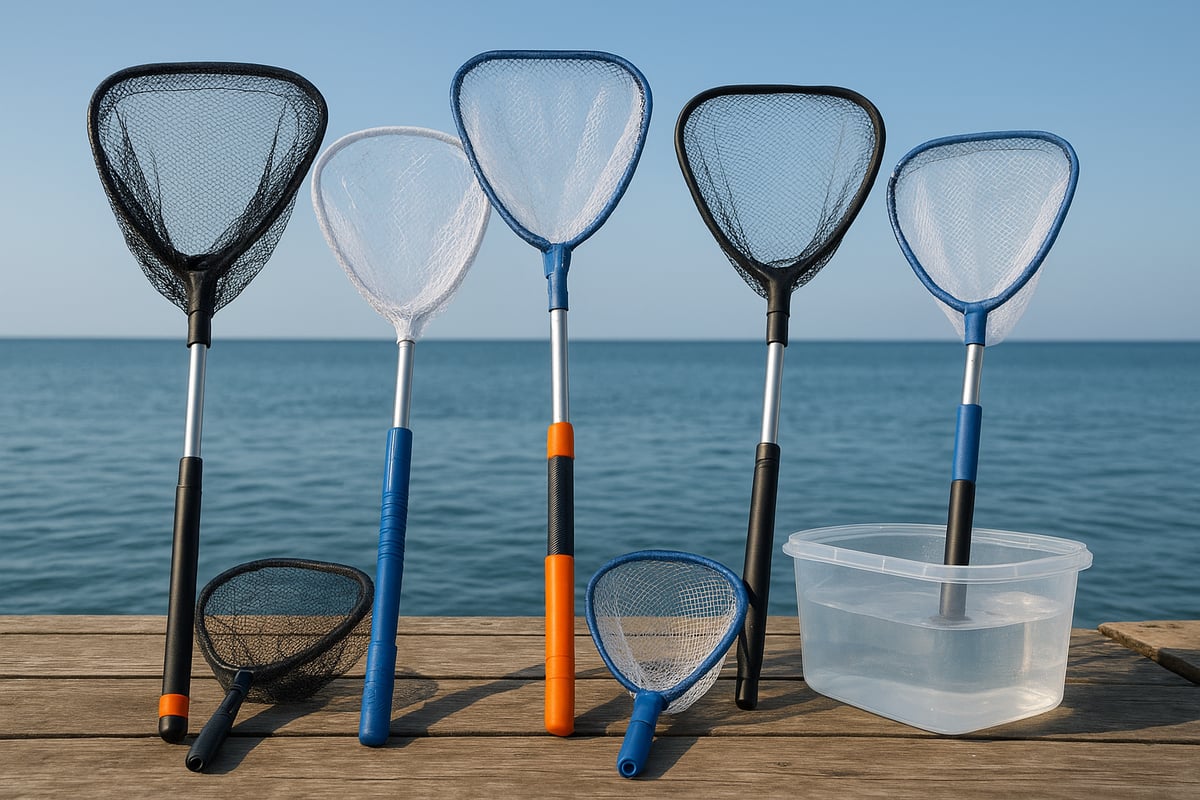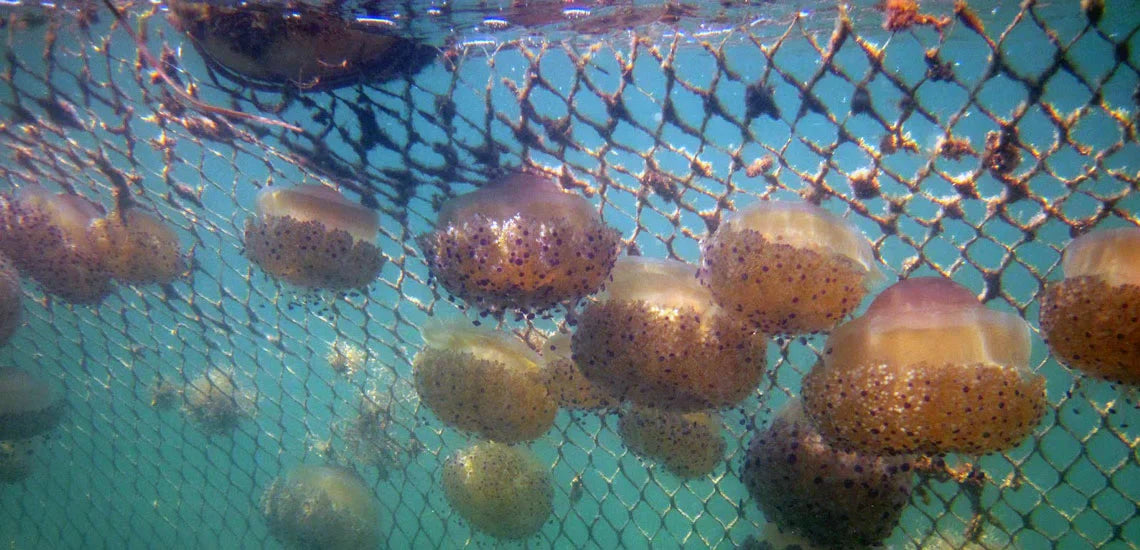In 2025, the jelly fish net is capturing the attention of marine enthusiasts, researchers, and hobbyists alike. As interest in sustainable marine activities grows, the right tools make all the difference. This comprehensive guide explores expert advice on selecting and using a jelly fish net, highlights the latest innovations, and addresses common challenges. Whether you are involved in marine research, aquarium care, or recreational collection, you will find actionable strategies here. Discover the main types of nets, get maintenance tips, and learn about emerging trends to make informed decisions and enhance your marine experiences.
Understanding Jelly Fish Nets: Types and Features
Jelly fish nets are essential tools for anyone working with jellyfish in 2025, whether for research, aquariums, or recreation. A jelly fish net is specifically designed to safely capture and handle these delicate marine animals. Their popularity has grown as more people engage in marine activities and seek better ways to protect both themselves and jellyfish.

Main Types of Jelly Fish Net
There are several types of jelly fish net available, each suited for different tasks. Hand nets are compact and ideal for small aquariums or close-up collection. Scoop nets have a deeper basket, making them perfect for larger jellyfish or open water. Dip nets offer extended reach and are often used by researchers in the field. Specialty jelly fish nets may feature unique shapes or materials for rare species or challenging environments.
Selecting the right jelly fish net type depends on your intended use. For example, public aquariums often use scoop nets for safe transfer, while marine biologists may prefer dip nets for coastal studies.
| Type | Best Use | Typical Handle |
|---|---|---|
| Hand Net | Small tanks, hobbyists | Fixed |
| Scoop Net | Large jellyfish, aquariums | Telescopic |
| Dip Net | Field research, deep water | Telescopic |
| Specialty Net | Unique species, research | Custom |
Material and Handle Comparisons
The effectiveness of a jelly fish net greatly depends on its materials and handle design. Nylon and polyester are common choices for mesh, offering strength and flexibility. Mesh size is crucial; smaller mesh prevents escape and reduces injury, while larger mesh is suitable for bigger jellyfish.
Frame durability matters for frequent use. Aluminum frames are lightweight and rust-resistant, while stainless steel offers extra strength. Handle types also vary. Telescopic handles provide adjustable reach, fixed handles deliver stability, and ergonomic grips improve comfort during long sessions.
Choosing the right combination of mesh material and handle type ensures your jelly fish net performs well in any setting. Consider your environment and frequency of use when making a selection.
Key Features and Safety
Modern jelly fish net designs incorporate advanced features for both user and animal safety. Look for knotless mesh to minimize damage to jellyfish, anti-tangle technology for smoother operation, and UV resistance for durability in sunlight. Buoyant frames prevent accidental loss in water.
When evaluating options, always prioritize safety for both the handler and the jellyfish. Wearing gloves and using nets with soft mesh can prevent stings and injuries. For a deeper understanding of net features and expert tips, the Fishing nets overview and tips page offers valuable guidance on selecting the best jelly fish net for your needs.
Real-World Examples and Trends
Jelly fish net usage is expanding across various fields. Marine researchers rely on these nets for population studies and species monitoring. Aquarists use them to maintain tanks and safely move jellyfish. Recreational collectors seek lightweight, easy-to-clean nets for shoreline exploration.
A growing trend in 2025 is the demand for eco-friendly and sustainable jelly fish net materials. Manufacturers now offer biodegradable mesh options and recycled frames. This shift aligns with global efforts to reduce environmental impact while maintaining high performance.
The evolution of the jelly fish net reflects advancements in both technology and environmental awareness, making these tools indispensable for anyone involved with jellyfish.
How to Choose the Right Jelly Fish Net in 2025
Choosing the optimal jelly fish net in 2025 requires careful consideration of your unique needs, the environments you’ll be working in, and the latest advancements in net design. Whether you are a marine researcher, aquarium hobbyist, or recreational collector, finding the right fit ensures safe, efficient, and ethical jellyfish handling.

Assessing Your Needs and Environment
The first step to selecting a jelly fish net is to define your primary objective. Are you conducting scientific research, maintaining an aquarium, or engaging in recreational jellyfish collection? Your intended use will influence the specifications you require.
Consider the environment where you’ll be using your jelly fish net. Saltwater and freshwater habitats demand different materials for corrosion resistance. If you plan to collect jellyfish from open ocean versus tanks or controlled environments, portability and net size become critical.
Think about the species and sizes of jellyfish you expect to handle. Larger species may call for a bigger, sturdier jelly fish net, while delicate species require softer mesh and finer netting. Frequency of use is another factor—regular users may benefit from lightweight, ergonomic designs for comfort.
Budget can also guide your decision. Hobbyists might prioritize affordability, while professionals may invest in high-end models with advanced features. By carefully assessing these aspects, you lay the groundwork for an informed purchase.
Key Selection Criteria and Expert Tips
When comparing options, focus on the technical aspects that matter most for jellyfish safety and user efficiency. Mesh size is crucial: a jelly fish net with fine, knotless mesh prevents escape and reduces the risk of injury to delicate jellyfish. The shape of the net should allow smooth movement through water, minimizing stress on the animals.
Frame strength and flexibility are vital for handling a range of jellyfish sizes. A rigid frame offers control, while a flexible frame can absorb movement and reduce tearing risk. Handle length and material affect your reach and comfort—telescopic handles are ideal for variable environments, while fixed handles offer stability.
Weight and maneuverability also impact your experience. A lightweight jelly fish net is easier to use for extended periods and allows precise movement in the water. Opt for ergonomic grips to reduce hand fatigue during repetitive tasks.
Expert tip: Marine biologists often choose clear or light-colored nets, as these help reduce visual stress for jellyfish during capture. For rare or fragile species, this small adjustment can make a significant difference in survival rates.
By evaluating these criteria, you ensure your jelly fish net is both effective and gentle, supporting best practices in marine care.
Comparing Popular Brands and Models
The 2025 market offers a variety of jelly fish net brands, each with unique features. Leading manufacturers often provide models with knotless mesh, anti-tangle designs, and UV-resistant coatings. User reviews highlight durability, ease of cleaning, and the effectiveness of different handle types.
Below is a comparison table summarizing key attributes:
| Brand | Mesh Type | Handle Type | Notable Feature | Price Range |
|---|---|---|---|---|
| AquaTech | Knotless | Telescopic | UV-resistant frame | $$ |
| OceanSafe | Fine mesh | Ergonomic | Lightweight design | $$-$$$ |
| MarinePro | Polyester | Fixed | Anti-tangle mesh | $-$$ |
Warranty options and customer support are also worth considering, especially for frequent use. Recent innovations include biodegradable mesh materials and modular handles for easy upgrades.
For those interested in exploring a curated selection, the Small mesh fishing nets collection showcases nets suited for delicate species like jellyfish, helping users compare real-world options.
Sales data from 2024 indicate a growing preference for eco-friendly and ergonomic jelly fish net models. By weighing these factors, you can select a product that balances performance, safety, and sustainability.
Step-by-Step Guide: Using a Jelly Fish Net Safely and Effectively
Handling jellyfish requires care, precision, and the right tools. A well-chosen jelly fish net is essential for safe, effective collection and transfer, whether you are a researcher, aquarist, or hobbyist. This guide offers step-by-step instructions to help you use your jelly fish net with confidence and protect both yourself and the marine life you encounter.

Preparing for Collection or Handling
Proper preparation ensures your jelly fish net is ready for use and helps protect both you and the jellyfish. Start by inspecting your jelly fish net for any damage, such as torn mesh or loose frames. Cleanliness is vital, so rinse the net to remove any residue from previous use.
Before heading out, assemble and adjust telescopic handles if your jelly fish net offers this feature. This allows for flexibility and reach, depending on your environment.
Safety is paramount. Always wear appropriate safety gear:
- Nitrile or rubber gloves to guard against stings
- Protective clothing for arms and legs
- Safety eyewear to shield your eyes from splashes
Choose the best time and location for collection. Early morning or late afternoon is ideal when conditions are calm. Prepare containers or tanks filled with clean, temperature-matched water to receive the jellyfish immediately after capture.
By ensuring your jelly fish net and equipment are in top condition, you reduce risk and increase your success rate. For more on advanced net features and safe deployment, you can review the Jellyfish Safety Nets Overview, which highlights UV resistance and anti-tangle designs.
Best Practices for Capturing Jellyfish
Capturing jellyfish requires a gentle approach. Always move slowly and deliberately when using your jelly fish net. Sudden movements can stress or injure the jellyfish, and may also result in missed opportunities.
Follow these best practices:
- Approach the jellyfish from the side, not above, to avoid startling them.
- Submerge the jelly fish net fully before attempting to scoop.
- Use a smooth, gentle scooping motion, keeping the net parallel to the water surface.
- Avoid lifting the net abruptly out of the water; instead, support the net beneath the jellyfish as you raise it slowly.
A key expert tip: Angle your jelly fish net to match the natural swimming direction of the jellyfish. This minimizes contact and reduces stress. Public aquariums often use this technique to safely collect delicate species.
Using a knotless mesh design can significantly lower injury rates. Recent data shows a marked reduction in jellyfish injuries when aquarists switch to knotless nets versus traditional knotted types. Always keep the jelly fish net submerged during capture and transfer to prevent unnecessary air exposure.
Handling and Transferring Jellyfish
Once captured, support the jellyfish fully with the jelly fish net to prevent tearing of their delicate tissues. Move the jellyfish quickly but gently to pre-prepared, water-filled containers. This minimizes stress and reduces the risk of injury.
Use containers with soft, rounded edges and fill them with water from the collection site to match temperature and salinity. Avoid overcrowding containers, as this can lead to additional stress for the jellyfish.
After each use, rinse your jelly fish net thoroughly with fresh water, removing any remaining tentacles or debris. Disinfect the net as needed to prevent disease spread, especially when working with multiple specimens or tanks.
Proper disposal of bycatch or debris is essential. Never release unwanted organisms back into the wild unless it is safe and legal to do so. Always check for and remove any debris from your jelly fish net before storing it away.
By following these steps, you ensure your jelly fish net remains effective and safe for both you and the marine life you study or enjoy.
Maintenance and Care for Longevity
Proper maintenance is essential for maximizing the lifespan and performance of your jelly fish net. By dedicating a few minutes to care after each use, you ensure that your equipment remains safe, effective, and ready for any marine adventure. Let us look at the best practices for cleaning, storing, repairing, and upgrading your jelly fish net.

Cleaning and Storing Your Jelly Fish Net
Regular cleaning is a cornerstone of jelly fish net care. After every use, rinse your jelly fish net thoroughly with fresh water, especially if it has been in saltwater. Salt and residue can degrade both the mesh and frame over time, so ensure all areas are flushed clean. Remove any attached debris, tentacles, or organic material from the mesh and frame, using a soft brush if necessary.
Once clean, allow the jelly fish net to dry completely before storage. Moisture trapped in the mesh can lead to unpleasant odors or mold growth. Choose a well-ventilated, shaded spot to hang the net, away from direct sunlight, which can weaken synthetic fibers. For frequent users, investing in a dedicated drying rack or wall-mounted hooks can streamline your routine.
Proper storage also plays a vital role in prolonging the life of your jelly fish net. Store the net in a cool, dry environment, ideally within a protective bag or container to prevent dust and accidental damage. For more ideas on storage solutions and marine gear maintenance, explore the Marine equipment and boating gear resource for best practices used by professionals.
Some simple storage options include:
- Hanging the net on a hook in a ventilated area
- Using a mesh bag for easy transport and airflow
- Storing multiple nets flat in a large plastic bin
A consistent cleaning and storage routine keeps your jelly fish net in top condition and ready for use whenever you need it.
Repairing and Upgrading Nets
Even with careful handling, a jelly fish net can develop minor tears or frame damage over time. Inspect your jelly fish net regularly for signs of wear, such as holes in the mesh, frayed edges, or bent frames. Early detection allows for simple repairs before issues worsen.
For small holes, use a DIY repair kit to patch the mesh. These kits often include replacement mesh and waterproof adhesive. For larger tears or structural problems, a professional service may be more reliable. Upgrading components, such as switching to ergonomic handles or higher-grade mesh, can also enhance performance and comfort.
Below is a table comparing repair approaches:
| Repair Type | DIY Kits | Professional Services |
|---|---|---|
| Mesh patching | Quick, affordable | Durable, seamless finish |
| Frame adjustments | Basic bending or tightening | Full replacement possible |
| Handle upgrades | Easy to install | Custom fitting available |
Before each use, perform a quick safety check on your jelly fish net. Confirm that all repairs are secure, the frame is stable, and the mesh is intact. With proper care, the average lifespan of a jelly fish net can extend well beyond a single season, ensuring you get the most value from your investment.
Innovative Uses and Applications for Jelly Fish Nets in 2025
Jelly fish net innovations are shaping how professionals and enthusiasts approach marine tasks in 2025. These nets have evolved far beyond their traditional role, now serving diverse functions in science, education, art, and conservation. Let us explore how the jelly fish net is making an impact in new and unexpected ways.
Beyond Collection: Creative and Scientific Uses
In 2025, the jelly fish net is a staple tool in many aquatic settings. Aquarium professionals rely on the jelly fish net for gentle removal of debris and uneaten food from tanks, ensuring a clean habitat for delicate species. Educators use these nets during marine biology classes to demonstrate safe jellyfish handling and introduce students to hands-on ocean science.
Citizen science projects often distribute jelly fish nets to volunteers for environmental monitoring. These efforts help track jellyfish populations and assess water quality in coastal regions. Artists and event planners are also embracing the jelly fish net, repurposing them for interactive displays, themed exhibitions, and even coastal art installations.
Additionally, jelly fish nets play a crucial role in coastal cleanup initiatives. Volunteers use them to remove plastic waste and invasive species, protecting both jellyfish and broader marine ecosystems. The versatility and gentle design of the jelly fish net make it an ideal choice for activities that blend creativity, education, and environmental action.
Emerging Trends and Technologies
The jelly fish net is at the forefront of technological advancements in marine research and conservation. In 2025, smart nets equipped with sensors are becoming more common, allowing users to collect data about jellyfish species, water conditions, and bycatch rates in real time. These innovations help researchers monitor marine ecosystems more effectively.
Manufacturers are introducing eco-friendly materials and biodegradable options for jelly fish nets, addressing concerns about plastic pollution. Customizable designs are now available, enabling users to select mesh size and frame style according to specific jellyfish species or project requirements.
Collaboration between net makers and marine institutes is accelerating the adoption of adaptive designs for sustainable fisheries. For example, adaptive strategies and net modifications are discussed in this comprehensive review of jellyfish mitigation for net-based fisheries. Furthermore, advancements in automated recognition systems, such as automated jellyfish identification, are streamlining data collection and species monitoring, making the jelly fish net even more valuable for research and environmental management.
Safety and Ethical Considerations
Responsible use of the jelly fish net is essential for both user safety and marine welfare. Always follow humane handling guidelines, which prioritize minimizing stress and injury to jellyfish during collection and transfer.
Be aware of legal regulations regarding jellyfish collection and release in your area, as these protect native species and sensitive habitats. Community programs often provide training on ethical practices, helping users of all experience levels contribute to jellyfish conservation and education.
Future Outlook: Jelly Fish Nets and Marine Conservation
The future of marine conservation is closely linked to the evolution of the jelly fish net. These specialized tools are increasingly vital for researchers tracking jellyfish populations, helping scientists monitor species health and migration. By using a jelly fish net, conservationists can collect live specimens without causing harm, supporting research into endangered species and their habitats.
Jelly fish net applications extend to studying jellyfish blooms, which are influenced by climate change. Monitoring these blooms offers insights into shifting ocean conditions and helps predict ecological impacts. For example, Pacific marine research teams use jelly fish nets to gather data on rare species, contributing to global conservation efforts. With careful use, the jelly fish net becomes a bridge between science and sustainable marine solutions.
Anticipated Innovations and Market Trends
The jelly fish net market is set for major growth, driven by material and design advancements. Manufacturers are prioritizing lightweight, durable frames and eco-friendly options to minimize environmental impact. The adoption of digital tracking and data logging is making nets smarter, allowing researchers to gather more precise data during fieldwork.
According to Jellyfish Pool Market Trends, consumer demand is pushing brands to innovate with biodegradable meshes and ergonomic designs. These trends are reflected in the projected market size for jelly fish nets in 2025, as both professionals and hobbyists seek high-performance, sustainable equipment. The jelly fish net is evolving into a vital tool for both science and responsible recreation.
Expert Recommendations for 2025 and Beyond
To stay at the forefront of jelly fish net use, experts recommend ongoing education and engagement with marine science communities. Participating in citizen science projects and following best practices ensures ethical handling and conservation. Online forums and expert-led workshops offer valuable resources for learning about the latest jelly fish net techniques, keeping users informed and empowered for the future.
You’ve now got a solid foundation for choosing and using jelly fish nets with confidence, whether you’re a researcher, aquarium enthusiast, or just passionate about marine life. With expert tips, maintenance advice, and the latest trends for 2025, you’re ready to take your next step. If you’re looking to put this knowledge into action, explore New Zealand’s trusted source for high quality fishing nets and gear—crafted for both professionals and hobbyists. Find the right net for your needs and enjoy reliable service and quick turnaround times when you Buy Now.

